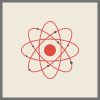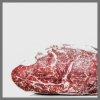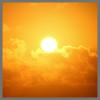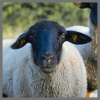-

Jan
02
Interpretive Summary: Restricted feeding of weight control diets induces weight loss and affects body composition, voluntary physical activity, blood metabolites, hormones, and oxidative stress markers, and fecal metabolites and microbiota of obese cats

The objective of this study was to determine the effects of restricting the intake of weight control diets on weight loss, body composition, voluntary physical activity, serum markers of metabolism and inflammation, and fecal metabolites and microbiota of obese cats.
Read more
-

Jan
02
Interpretive Summary: Cannabidiol can affect morphology, morphometry, enzymatic and microbial activity of rabbit digestive system

The study compares the characteristics of the small and large intestines in 2 groups of healthy meat rabbit feeding or not with a cannabidiol extract for 27 d. Feed intake and final weight are similar for both groups. However, cannabidiol significantly interfered with protein digestion in the small intestine and decreased the microbial activity in the cecum.
Read more
-

Jan
02
Interpretive Summary: Etiology, persistence, and risk factors of subclinical mastitis in a meat-producing sheep flock

Subclinical mastitis is the inflammation of the udder without visible signs. It is typically caused by bacterial infection. This disease can have important economic and welfare impacts on meat-producing flocks, including udder damage, decreased milk yield, impaired lamb growth, and increased ewe and lamb mortality.
Read more
-

Jan
02
Interpretive Summary: Dog sniffing biomechanic responses in an odor detection test of odorants with differing physical properties

Dogs are utilized in forensic science for their extensive scent-detection capabilities. They are often considered the “gold standard” in-field detection for targets such as illicit drugs and explosives. Despite their prevalence in the field, relatively little is known about how dogs interact with and transport volatile organic compounds through their olfactory system.
Read more
-

Dec
27
Thank you for making our work a reality
Read more
-

Dec
23
Thank you for making our work a reality!
Read more
-

Dec
19
Washington Roundup – December 2024

Decembers edition of Washington Roundup includes three overviews: Outlook for Continuing Resolution and Farm Bill Extension Unclear, USDA and FDA Release Dietary Guidelines Committee Report, and FDA and APHIS Release Charter on Animal Biologicals Jurisdiction
Read more
-

Dec
19
2025 Dietary Guidelines Advisory Committee Report Open for Public Comment

The Scientific Report of the 2025 Dietary Guidelines Advisory Committee (Scientific Report) was submitted to the Secretaries of the U.S. Department of Health and Human Services (HHS) and the U.S. Department of Agriculture (USDA) and is available online. The departments have opened a 60-day comment period to collect input from the public on the Scientific Report (December 11, 2024 – February 10, 2025).
Read more
-

Dec
19
OSTP’s STEM Five-Year Plan - A Blueprint for Advancing STEM Education and Talent

As we all know, Animal Sciences is a multifaceted STEM field that studies animal biology and management to improve the lives of both animals and humans. It applies principles from the biological, physical, and social sciences to problems in livestock production and management.
Read more
-

Dec
18
The Giving Herd - ASAS Foundation Newsletter - December 2024

The December Edition of The Giving Herd, an ASAS Foundation Newsletter
Read more
-

Dec
12
Interpretive Summary: Soybean isoflavone promotes milk yield and milk fat yield through the ERα-mediated Akt/mTOR pathway in dairy goats

This study aimed to assess the impact of soybean isoflavone (SIF) on milk production and composition in dairy goats. In vivo experiments revealed that SIF supplementation (100 mg/d) significantly raised serum estrogen and prolactin levels, resulting in increased milk yield and fat content compared to the control group.
Read more
-

Dec
12
Interpretive Summary: D-aspartate stimulates growth hormone secretion in wethers

Growth hormone (GH), secreted by the anterior pituitary gland, is crucial in the regulation of ruminant growth and development, milk production, and energy metabolism in ruminants. Controlling GH secretion is, therefore, an essential factor in enhancing productivity.
Read more
-

Dec
12
Interpretive Summary: Cecal metabolomics of 2 divergently selected rabbit lines revealed microbial mechanisms correlated to intramuscular fat deposition

Genetic determination of phenotypes depends not only on the host genome but also on its microbiome, particularly that of the intestinal tract. Host and microbiome form a complex co-metabolism that ultimately affects relevant phenotypes, like the intramuscular fat content. The metabolomic analysis of the gut content can provide a functional characterization, giving a better insight into the microbiome activity implicated.
Read more
-

Dec
12
Interpretive Summary: Proteomic and metabolomic profiling of aged pork loin chops reveals molecular phenotypes linked to pork tenderness

Classifying fresh pork loin based on potential consumer appeal and value enables processors and producers to stand out in a competitive market, catering to domestic and export demands. Accurate classification aligns products with consumer expectations and benefits purveyors, chefs, retailers, and consumers by ensuring consistent quality.
Read more
-

Dec
12
Interpretive Summary: Early postmortem beef muscle proteome and metabolome variations due to supranutritional zinc and ractopamine hydrochloride supplementation

There is significant interest in improving the efficiency of beef production. Beef quality and consumer satisfaction are of equal importance. Feeding zinc (Zn) above nutritional recommendations and feeding ractopamine hydrochloride (RH) can be utilized to optimize cattle growth.
Read more
-

Dec
12
Interpretive Summary: Welfare and performance benefits of shade provision during summer for feedlot cattle in a temperate climatic zone

The performance and welfare benefits of providing shade in cattle feedlots have predominantly been investigated in higher-risk heat-stress zones. However, it is unclear whether the reported benefits of shade are relevant in cooler temperate zones.
Read more
-

Dec
05
Interpretive Summary: The essential oil blend Agolin Ruminant L reduces methane production in vitro and in vivo when included in the drinking water of cattle

Most research conducted to reduce methane (CH4) emissions from cattle has focused on intensive feeding systems, such as dairy and feedlots, where feeding management is tightly controlled. The delivery of CH4 mitigants to ruminants grazing in extensive pasture-based systems requires attention. Two experiments were conducted to investigate the delivery of an essential oil blend called Agolin Ruminant L (Agolin) to beef cattle via drinking water to reduce CH4 emissions.
Read more
-

Dec
05
Interpretive Summary: Adding gastrointestinal parasite resistance to the breeding objective in hair sheep: initial steps

Gastrointestinal parasite resistance is a heritable trait important to breeders of hair sheep. However, the U.S. Maternal Hair Index, provided by the National Sheep Improvement Program, omits parasite resistance. Selection indexes were designed in this study to continue improving total weight of lamb weaned per ewe lambing (TW), the current goal, and reduce postweaning fecal egg count (PFEC), an indicator of parasite resistance.
Read more
-

Dec
05
Interpretive Summary: Characterizing local pig breeds as reservoirs for the domestic pig genetic variability worldwide via contributions to gene diversity and allelic richness

The assessment of contributions to diversity is informative on how allelic frequencies of a metapopulation are partitioned among subpopulations and is further useful to identify unique subpopulations gathering rare alleles. Up to 2,260 pig genotypes were used to assess contributions to gene diversity and allelic richness in a total of 98 local domestic pig subpopulations and 6 Cosmopolitan pig populations worldwide.
Read more
-

Dec
05
Interpretive Summary: The effect of repeated lipopolysaccharide endotoxin challenge on immune response of breeding ewes and subsequent lamb performance

During disease states, bacterial endotoxins act locally and systemically, negatively impacting reproductive capacity and economic productivity. The present study investigated the impacts of repeated low-dose endotoxin exposure during follicular development on the immune response and subsequent reproductive and lamb growth variables.
Read more
 JanInterpretive Summary: Restricted feeding of weight control diets induces weight loss and affects body composition, voluntary physical activity, blood metabolites, hormones, and oxidative stress markers, and fecal metabolites and microbiota of obese cats
JanInterpretive Summary: Restricted feeding of weight control diets induces weight loss and affects body composition, voluntary physical activity, blood metabolites, hormones, and oxidative stress markers, and fecal metabolites and microbiota of obese cats The objective of this study was to determine the effects of restricting the intake of weight control diets on weight loss, body composition, voluntary physical activity, serum markers of metabolism and inflammation, and fecal metabolites and microbiota of obese cats.
The objective of this study was to determine the effects of restricting the intake of weight control diets on weight loss, body composition, voluntary physical activity, serum markers of metabolism and inflammation, and fecal metabolites and microbiota of obese cats. JanInterpretive Summary: Cannabidiol can affect morphology, morphometry, enzymatic and microbial activity of rabbit digestive system
JanInterpretive Summary: Cannabidiol can affect morphology, morphometry, enzymatic and microbial activity of rabbit digestive system The study compares the characteristics of the small and large intestines in 2 groups of healthy meat rabbit feeding or not with a cannabidiol extract for 27 d. Feed intake and final weight are similar for both groups. However, cannabidiol significantly interfered with protein digestion in the small intestine and decreased the microbial activity in the cecum.
The study compares the characteristics of the small and large intestines in 2 groups of healthy meat rabbit feeding or not with a cannabidiol extract for 27 d. Feed intake and final weight are similar for both groups. However, cannabidiol significantly interfered with protein digestion in the small intestine and decreased the microbial activity in the cecum. JanInterpretive Summary: Etiology, persistence, and risk factors of subclinical mastitis in a meat-producing sheep flock
JanInterpretive Summary: Etiology, persistence, and risk factors of subclinical mastitis in a meat-producing sheep flock Subclinical mastitis is the inflammation of the udder without visible signs. It is typically caused by bacterial infection. This disease can have important economic and welfare impacts on meat-producing flocks, including udder damage, decreased milk yield, impaired lamb growth, and increased ewe and lamb mortality.
Subclinical mastitis is the inflammation of the udder without visible signs. It is typically caused by bacterial infection. This disease can have important economic and welfare impacts on meat-producing flocks, including udder damage, decreased milk yield, impaired lamb growth, and increased ewe and lamb mortality. JanInterpretive Summary: Dog sniffing biomechanic responses in an odor detection test of odorants with differing physical properties
JanInterpretive Summary: Dog sniffing biomechanic responses in an odor detection test of odorants with differing physical properties Dogs are utilized in forensic science for their extensive scent-detection capabilities. They are often considered the “gold standard” in-field detection for targets such as illicit drugs and explosives. Despite their prevalence in the field, relatively little is known about how dogs interact with and transport volatile organic compounds through their olfactory system.
Dogs are utilized in forensic science for their extensive scent-detection capabilities. They are often considered the “gold standard” in-field detection for targets such as illicit drugs and explosives. Despite their prevalence in the field, relatively little is known about how dogs interact with and transport volatile organic compounds through their olfactory system. DecThank you for making our work a reality
DecThank you for making our work a reality DecThank you for making our work a reality!
DecThank you for making our work a reality! DecWashington Roundup – December 2024
DecWashington Roundup – December 2024 Decembers edition of Washington Roundup includes three overviews: Outlook for Continuing Resolution and Farm Bill Extension Unclear, USDA and FDA Release Dietary Guidelines Committee Report, and FDA and APHIS Release Charter on Animal Biologicals Jurisdiction
Decembers edition of Washington Roundup includes three overviews: Outlook for Continuing Resolution and Farm Bill Extension Unclear, USDA and FDA Release Dietary Guidelines Committee Report, and FDA and APHIS Release Charter on Animal Biologicals Jurisdiction Dec2025 Dietary Guidelines Advisory Committee Report Open for Public Comment
Dec2025 Dietary Guidelines Advisory Committee Report Open for Public Comment The Scientific Report of the 2025 Dietary Guidelines Advisory Committee (Scientific Report) was submitted to the Secretaries of the U.S. Department of Health and Human Services (HHS) and the U.S. Department of Agriculture (USDA) and is available online. The departments have opened a 60-day comment period to collect input from the public on the Scientific Report (December 11, 2024 – February 10, 2025).
The Scientific Report of the 2025 Dietary Guidelines Advisory Committee (Scientific Report) was submitted to the Secretaries of the U.S. Department of Health and Human Services (HHS) and the U.S. Department of Agriculture (USDA) and is available online. The departments have opened a 60-day comment period to collect input from the public on the Scientific Report (December 11, 2024 – February 10, 2025). DecOSTP’s STEM Five-Year Plan - A Blueprint for Advancing STEM Education and Talent
DecOSTP’s STEM Five-Year Plan - A Blueprint for Advancing STEM Education and Talent As we all know, Animal Sciences is a multifaceted STEM field that studies animal biology and management to improve the lives of both animals and humans. It applies principles from the biological, physical, and social sciences to problems in livestock production and management.
As we all know, Animal Sciences is a multifaceted STEM field that studies animal biology and management to improve the lives of both animals and humans. It applies principles from the biological, physical, and social sciences to problems in livestock production and management. DecThe Giving Herd - ASAS Foundation Newsletter - December 2024
DecThe Giving Herd - ASAS Foundation Newsletter - December 2024 The December Edition of The Giving Herd, an ASAS Foundation Newsletter
The December Edition of The Giving Herd, an ASAS Foundation Newsletter DecInterpretive Summary: Soybean isoflavone promotes milk yield and milk fat yield through the ERα-mediated Akt/mTOR pathway in dairy goats
DecInterpretive Summary: Soybean isoflavone promotes milk yield and milk fat yield through the ERα-mediated Akt/mTOR pathway in dairy goats This study aimed to assess the impact of soybean isoflavone (SIF) on milk production and composition in dairy goats. In vivo experiments revealed that SIF supplementation (100 mg/d) significantly raised serum estrogen and prolactin levels, resulting in increased milk yield and fat content compared to the control group.
This study aimed to assess the impact of soybean isoflavone (SIF) on milk production and composition in dairy goats. In vivo experiments revealed that SIF supplementation (100 mg/d) significantly raised serum estrogen and prolactin levels, resulting in increased milk yield and fat content compared to the control group. DecInterpretive Summary: D-aspartate stimulates growth hormone secretion in wethers
DecInterpretive Summary: D-aspartate stimulates growth hormone secretion in wethers Growth hormone (GH), secreted by the anterior pituitary gland, is crucial in the regulation of ruminant growth and development, milk production, and energy metabolism in ruminants. Controlling GH secretion is, therefore, an essential factor in enhancing productivity.
Growth hormone (GH), secreted by the anterior pituitary gland, is crucial in the regulation of ruminant growth and development, milk production, and energy metabolism in ruminants. Controlling GH secretion is, therefore, an essential factor in enhancing productivity. DecInterpretive Summary: Cecal metabolomics of 2 divergently selected rabbit lines revealed microbial mechanisms correlated to intramuscular fat deposition
DecInterpretive Summary: Cecal metabolomics of 2 divergently selected rabbit lines revealed microbial mechanisms correlated to intramuscular fat deposition Genetic determination of phenotypes depends not only on the host genome but also on its microbiome, particularly that of the intestinal tract. Host and microbiome form a complex co-metabolism that ultimately affects relevant phenotypes, like the intramuscular fat content. The metabolomic analysis of the gut content can provide a functional characterization, giving a better insight into the microbiome activity implicated.
Genetic determination of phenotypes depends not only on the host genome but also on its microbiome, particularly that of the intestinal tract. Host and microbiome form a complex co-metabolism that ultimately affects relevant phenotypes, like the intramuscular fat content. The metabolomic analysis of the gut content can provide a functional characterization, giving a better insight into the microbiome activity implicated. DecInterpretive Summary: Proteomic and metabolomic profiling of aged pork loin chops reveals molecular phenotypes linked to pork tenderness
DecInterpretive Summary: Proteomic and metabolomic profiling of aged pork loin chops reveals molecular phenotypes linked to pork tenderness Classifying fresh pork loin based on potential consumer appeal and value enables processors and producers to stand out in a competitive market, catering to domestic and export demands. Accurate classification aligns products with consumer expectations and benefits purveyors, chefs, retailers, and consumers by ensuring consistent quality.
Classifying fresh pork loin based on potential consumer appeal and value enables processors and producers to stand out in a competitive market, catering to domestic and export demands. Accurate classification aligns products with consumer expectations and benefits purveyors, chefs, retailers, and consumers by ensuring consistent quality. DecInterpretive Summary: Early postmortem beef muscle proteome and metabolome variations due to supranutritional zinc and ractopamine hydrochloride supplementation
DecInterpretive Summary: Early postmortem beef muscle proteome and metabolome variations due to supranutritional zinc and ractopamine hydrochloride supplementation There is significant interest in improving the efficiency of beef production. Beef quality and consumer satisfaction are of equal importance. Feeding zinc (Zn) above nutritional recommendations and feeding ractopamine hydrochloride (RH) can be utilized to optimize cattle growth.
There is significant interest in improving the efficiency of beef production. Beef quality and consumer satisfaction are of equal importance. Feeding zinc (Zn) above nutritional recommendations and feeding ractopamine hydrochloride (RH) can be utilized to optimize cattle growth. DecInterpretive Summary: Welfare and performance benefits of shade provision during summer for feedlot cattle in a temperate climatic zone
DecInterpretive Summary: Welfare and performance benefits of shade provision during summer for feedlot cattle in a temperate climatic zone The performance and welfare benefits of providing shade in cattle feedlots have predominantly been investigated in higher-risk heat-stress zones. However, it is unclear whether the reported benefits of shade are relevant in cooler temperate zones.
The performance and welfare benefits of providing shade in cattle feedlots have predominantly been investigated in higher-risk heat-stress zones. However, it is unclear whether the reported benefits of shade are relevant in cooler temperate zones. DecInterpretive Summary: The essential oil blend Agolin Ruminant L reduces methane production in vitro and in vivo when included in the drinking water of cattle
DecInterpretive Summary: The essential oil blend Agolin Ruminant L reduces methane production in vitro and in vivo when included in the drinking water of cattle Most research conducted to reduce methane (CH4) emissions from cattle has focused on intensive feeding systems, such as dairy and feedlots, where feeding management is tightly controlled. The delivery of CH4 mitigants to ruminants grazing in extensive pasture-based systems requires attention. Two experiments were conducted to investigate the delivery of an essential oil blend called Agolin Ruminant L (Agolin) to beef cattle via drinking water to reduce CH4 emissions.
Most research conducted to reduce methane (CH4) emissions from cattle has focused on intensive feeding systems, such as dairy and feedlots, where feeding management is tightly controlled. The delivery of CH4 mitigants to ruminants grazing in extensive pasture-based systems requires attention. Two experiments were conducted to investigate the delivery of an essential oil blend called Agolin Ruminant L (Agolin) to beef cattle via drinking water to reduce CH4 emissions. DecInterpretive Summary: Adding gastrointestinal parasite resistance to the breeding objective in hair sheep: initial steps
DecInterpretive Summary: Adding gastrointestinal parasite resistance to the breeding objective in hair sheep: initial steps Gastrointestinal parasite resistance is a heritable trait important to breeders of hair sheep. However, the U.S. Maternal Hair Index, provided by the National Sheep Improvement Program, omits parasite resistance. Selection indexes were designed in this study to continue improving total weight of lamb weaned per ewe lambing (TW), the current goal, and reduce postweaning fecal egg count (PFEC), an indicator of parasite resistance.
Gastrointestinal parasite resistance is a heritable trait important to breeders of hair sheep. However, the U.S. Maternal Hair Index, provided by the National Sheep Improvement Program, omits parasite resistance. Selection indexes were designed in this study to continue improving total weight of lamb weaned per ewe lambing (TW), the current goal, and reduce postweaning fecal egg count (PFEC), an indicator of parasite resistance. DecInterpretive Summary: Characterizing local pig breeds as reservoirs for the domestic pig genetic variability worldwide via contributions to gene diversity and allelic richness
DecInterpretive Summary: Characterizing local pig breeds as reservoirs for the domestic pig genetic variability worldwide via contributions to gene diversity and allelic richness The assessment of contributions to diversity is informative on how allelic frequencies of a metapopulation are partitioned among subpopulations and is further useful to identify unique subpopulations gathering rare alleles. Up to 2,260 pig genotypes were used to assess contributions to gene diversity and allelic richness in a total of 98 local domestic pig subpopulations and 6 Cosmopolitan pig populations worldwide.
The assessment of contributions to diversity is informative on how allelic frequencies of a metapopulation are partitioned among subpopulations and is further useful to identify unique subpopulations gathering rare alleles. Up to 2,260 pig genotypes were used to assess contributions to gene diversity and allelic richness in a total of 98 local domestic pig subpopulations and 6 Cosmopolitan pig populations worldwide. DecInterpretive Summary: The effect of repeated lipopolysaccharide endotoxin challenge on immune response of breeding ewes and subsequent lamb performance
DecInterpretive Summary: The effect of repeated lipopolysaccharide endotoxin challenge on immune response of breeding ewes and subsequent lamb performance During disease states, bacterial endotoxins act locally and systemically, negatively impacting reproductive capacity and economic productivity. The present study investigated the impacts of repeated low-dose endotoxin exposure during follicular development on the immune response and subsequent reproductive and lamb growth variables.
During disease states, bacterial endotoxins act locally and systemically, negatively impacting reproductive capacity and economic productivity. The present study investigated the impacts of repeated low-dose endotoxin exposure during follicular development on the immune response and subsequent reproductive and lamb growth variables.



